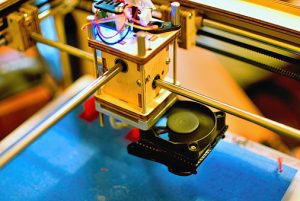 Osteoarthritis and joint pain may be reduced with new 3D-printed cartilage, according to research. Associate professor Ibrahim T. Ozbolat said, “Our goal is to create tissue that can be used to replace large amounts of worn-out tissue or design patches. Those who have osteoarthritis in their joints suffer a lot. We need a new alternative treatment for this.”
Osteoarthritis and joint pain may be reduced with new 3D-printed cartilage, according to research. Associate professor Ibrahim T. Ozbolat said, “Our goal is to create tissue that can be used to replace large amounts of worn-out tissue or design patches. Those who have osteoarthritis in their joints suffer a lot. We need a new alternative treatment for this.”
Cartilage cannot repair itself, so once the damage occurs, the cartilage remains damaged. On the other hand, it is easy to target because it is only made up of one type of cells and does not have any blood vessels within the tissue.
Advertisement
Previous attempts have been made to re-create cartilage in a hydrogel made of polymer chains and water. Ozbolat explained, “Hydrogels don’t allow cells to grow as normal. The hydrogel confines the cells and doesn’t allow them to communicate as they do in native tissues.” Because of this, the resulting tissues do not have sufficient mechanical integrity. Plus, degradation of the hydrogel can produce toxic compounds that are detrimental to cell growth.
The researchers found a way to produce larger-scale tissues without a scaffold. The researchers created a tiny tube made of alginate (an algae extract), injected cartilage cells into the tube and allowed them to grow for about a week. Cells to not stick to alginate, enabling the researchers to remove them from the tube when time is up.
The resulting cartilage then becomes an ink substitute for a 3D printer that lays rows of cartilage in a pattern. After about half an hour, the cartilage patch self-adheres enough to move to a petri dish. The researchers put the patch in nutrient media so that it can further integrate into a single tissue. Eventually, the strands fully attach and fuse together.
Ozbolat added, “We can manufacture the strands in any length we want. Because there is no scaffolding, the process of printing the cartilage is scalable, so the patches can be made bigger as well. We can mimic real articular cartilage by printing strands vertically and then horizontally to mimic the natural architecture.”
The cartilage produced is quite similar to cow cartilage. Although the new cartilage is inferior to the natural cartilage, of course, it still ranks more supreme than cartilage produces in hydrogel.
If the new technique becomes used in humans, each patient would have to provide their own material – like existing cartilage, for example – in order to minimize tissue rejection.
Osteoarthritis (joint pain): Lifestyle tips for pain relief
Advertisement
Osteoarthritis or joint pain can prevent you from enjoying your daily life, as the pain can be disabling at times. Arthritis in particular is the number one cause of pain and disability worldwide. But the good news is, there are many different lifestyle options you can try to find the best pain relief option. Here are some pointers for easing the symptoms and living with pain.
Always be frank with your doctor about your symptoms – if your doctor is unaware of what you are going through, they can’t help you.
- Adjust your positions frequently.
- Periodically tilt our neck, move your hands, and stretch your legs to prevent stiffness.
- Take breaks when needed and don’t push yourself too much.
- Stand or walk at least once every half hour.
- Manage your weight, as extra pounds add stress to connective tissues.
- Quit smoking.
- Pick activities that are best suited for you and your capabilities.
- Focus on stretching and range-of-motion exercises.
- Avoid activities like running, jumping, tennis, high-impact aerobics, and repetitive movements.
- Take medications as prescribed and use over-the-counter pain relievers when needed.
- Use creams containing capsaicin.
- Use cold and hot compresses.
- Try acupuncture.
- Get massages.
- Try relaxation therapy.
- Exercise regularly.
- Use braces or insoles.
- Use assistive devices like canes when needed.
By utilizing some of these lifestyle tips, you can better manage and ease pain related to osteoarthritis and joint pain in general.
